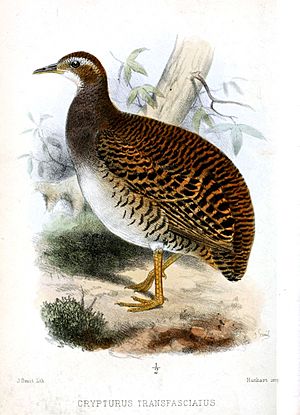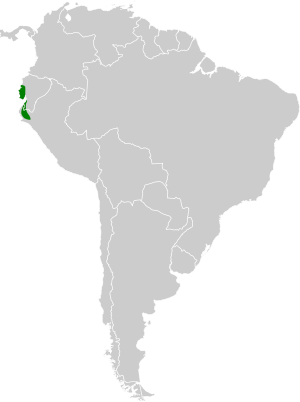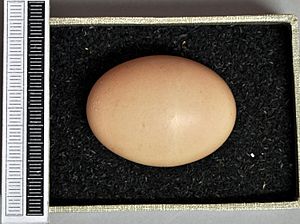Pale-browed tinamou facts for kids
Quick facts for kids Pale-browed tinamou |
|
|---|---|
 |
|
| Conservation status | |
| Scientific classification | |
| Genus: |
Crypturellus
|
| Species: |
transfasciatus
|
 |
|
The pale-browed tinamou (Crypturellus transfasciatus) is a special kind of bird called a tinamou. You can find it living in the warm, dry forests of Peru and Ecuador.
Contents
What's in a Name?
The scientific name for this bird, Crypturellus, comes from a mix of Latin and Greek words. Kruptos means covered or hidden, and oura means tail. The ending ellus means small. So, Crypturellus basically means small hidden tail, which describes how its tail feathers are often tucked away!
About Tinamous
All tinamous belong to the bird family called Tinamidae. They are also part of a bigger group of birds known as ratites. Other famous ratites include ostriches and emus. But unlike most ratites, tinamous can fly! They aren't super strong fliers, but they can get off the ground. Scientists believe tinamous are the closest living relatives to ancient flying birds that all ratites evolved from.
What Does It Look Like?
The pale-browed tinamou is about 28 centimeters (11 inches) long. It has a greyish-brown back with fine black wavy lines. Its throat is white, and the rest of its belly is grey or a light yellowish-brown. You can see stripes on its sides. It has a very brown head and a clear white stripe above its eye, like an eyebrow. Its legs are pink!
How It Behaves
Just like other tinamous, the pale-browed tinamou mostly eats fruit that has fallen to the ground or grows on low bushes. It also munches on small amounts of invertebrates (like insects), flower buds, soft leaves, seeds, and roots.
When it's time for eggs, the male tinamou is the one who takes care of them. He might even incubate eggs from as many as five different females! After the chicks hatch, he raises them until they are old enough to live on their own. Their nests are usually on the ground, hidden in thick bushes or between the big roots of trees.
Where It Lives
The pale-browed tinamou lives in warm, dry forests up to 1,500 meters (about 4,900 feet) high. You can find this bird in western Ecuador, in areas like southern Manabí, Guayas, and parts of El Oro and Loja. It also lives in northwestern Peru, in Tumbes and western Piura. These areas are part of the Ecuadorian dry forests and Tumbes–Piura dry forests regions.
Why It Needs Our Help
The IUCN (International Union for Conservation of Nature) says the pale-browed tinamou is a "Near Threatened" species. This means their numbers are going down, and they might be in danger if we don't help.
The biggest problems for these birds are:
- Deforestation: People are cutting down too many trees, which destroys their homes.
- Habitat damage: Livestock like cows and goats eat too much grass and plants, which harms the forest where the tinamous live.
- Hunting: Some people hunt these birds for food.
- Farming: While not as big a threat, new farms can also take away their habitat.
The area where these birds live is about 41,900 square kilometers (16,200 square miles). Protecting this land is important for their future.
See also
 In Spanish: Perdiz de ceja pálida para niños
In Spanish: Perdiz de ceja pálida para niños




